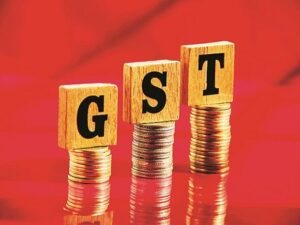 The solution lies in ensuring adequate supply and not making ad hoc changes to GST rates
The solution lies in ensuring adequate supply and not making ad hoc changes to GST rates
The 43rd meeting of the GST Council convened on May 28 to decide on matters including tax treatment of Covid-19 supplies, dealing with inverted duty structure for certain items and extension of relief to small taxpayers, and extension of compensation period beyond June 2022, when the current scheme comes to an end. With as many as eight finance ministers from Opposition-ruled states, the deliberations of the Council were not expected to be smooth, and it is not surprising that key decisions have been deferred.
The most urgent issue was lowering tax rates on Covid-19 related supplies such as vaccines, drugs and medicines, oxygen cylinders and concentrators, and other material and equipment required for Covid-care. Some states have asked for exempting vaccines (currently taxed at 5%), but given the higher rates on inputs, this would make them ineligible for availing input tax credit, and that may actually increase prices.
Some have suggested zero-rating of the tax and some others have suggested levying a small rate of 0.1% to enable input tax credit. However, zero rating is done only for exports and levying a low rate would cause heavy refunds to be made. Considering the differences, the Council constituted an 8-member panel headed by the Meghalaya CM to deliberate and submit a report by June 8 on the matter.
The important point that is missed in the discussion is that tax component is not a major determinant of the price of the vaccine today; it is the convoluted vaccine policy, combined with the supply-demand mismatch. As there is market failure due to high externality, the responsibility to vaccinate and financing the expenditures from the Consolidated Fund falls squarely on the government.
The Constitution places prevention and containment of contagious diseases in the Concurrent List (Entry 29), and the Union Government should take the responsibility of financing the programme, and the states as well as the private sector should be involved in administering the vaccine. The government should have assessed the requirements when the pandemic was raging, and considering the capacity constraint of the two domestic producers, it should have opened the market for imports.
Instead, the decision to import was delayed, and the Centre simply asked the states to vaccinate 590 million people in the 18-45 age group that would require 1.22 billion doses. Monopsonistic procurement of vaccine by the Centre and its distribution among the states would have helped bring down the prices instead of States going for global tenders. Even for the domestic manufacturers, the initial price was relaxed, and Covishield is now priced at Rs 300/dose to the states and Rs 600/dose to the private sector. Covaxin is priced at Rs 400/dose to the states and Rs 1200/dose to the private sector. Even now, it is not too late to reverse the decision. In the case of Covid-19 drugs and other supplies, the common man is made to pay black-market prices due to scarcity. The solution lies in ensuring adequate supply and not making ad hoc changes to GST rates.
Compensation to the states for the shortfall in revenue collections has been a vexed issue. In FY21, the shortfall was estimated by assuming that the states’ GST collections will increase by 7%, and the states were given a loan of Rs 1.1 trillion after adjusting the shortfall with estimated collections from compensation cess. The actual collection was lower than the previous years by 3.3%, and the states are concerned. For FY22, too, 7% ‘as-normal’ growth has been assumed, pegging the shortfall at Rs 2.7 trillion and, after adjusting the revenue of Rs 1.1 trillion from the compensation cess, the compensation payment is estimated at Rs 1.58 trillion; the Centre is supposed to borrow this amount and on-lend it to the states. Given the dire need for resources, the states will be left with no choice but to accept. However, the entire episode of GST compensation has left the states helpless and eroded their trust, and this could make them wary of future reforms.
The issue of compensation in the future after the present agreement ends in June 2022 is another major concern for the states. The problem would not have arisen if GST had been a money machine as was promised. Thankfully, as the technology platform has stabilised, the monthly collections have consistently exceeded Rs 1 trillion since October 2020. Unfortunately, due to the second wave, the estimated 17% increase over FY21 RE may not accrue. The future collections will depend upon economic recovery.
In 2017, when GST was introduced, the Centre agreed to a generous compensation scheme to clinch states’ assent. Now that states have nowhere to go, it remains to be seen how the Centre will address the matter. The entire process is likely to place severe challenges in Union-state financial relations, and it remains to be seen how these will be navigated.
Source: https://www.financialexpress.com/opinion/changing-gst-rates-for-covid-supplies-no-panacea/2263326/
© 2018 CA Chandan Agarwal. All rights reserved.